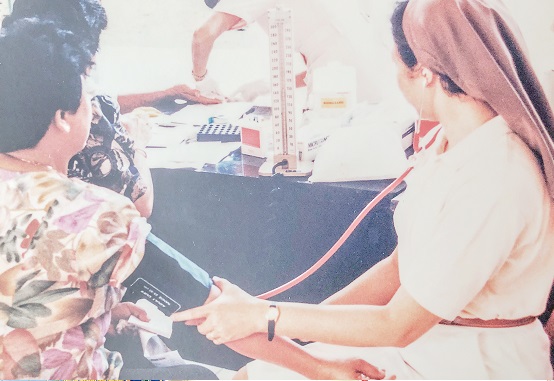Understanding Different Types of Arthritis and How They Affect the Body

Arthritis, a term derived from the Greek words “arthron” for joint and “itis” for inflammation, is commonly associated with joint pain. Yet, this condition is not a singular entity but rather a diverse family of joint-related disorders. Consultant rheumatologist Dr Law Weng Giap from Mount Alvernia Hospital sheds light on the different types of arthritis, its symptoms and effective management.
Mechanical vs. Inflammatory
Arthritis can be divided into two primary categories: mechanical and inflammatory.
Mechanical arthritis stems from structural wear and tear, often characterised by the slow damage of joint structures. One of its quintessential representatives is osteoarthritis, which predominantly affects individuals with active lifestyles or those subjected to significant joint strain.
In contrast, inflammatory arthritis revolves around joint inflammation. Conditions like rheumatoid arthritis, gout, psoriatic arthritis, and ankylosing spondylitis fall within this category. They share a common denominator – inflammation – but differ in their underlying triggers and complexities.
Did You Know?
Do not confuse arthritis with rheumatism! Rheumatism is technically not a medical condition, but a layman’s term to describe any form of aches and pains involving the joint, bone or muscle.
Arthritis Symptoms
Symptoms serve as the key to distinguishing one form of arthritis from another.
Osteoarthritis: This form of arthritis typically manifests as pain following physical activity such as walking, running or after work in the evenings, as well as brief morning stiffness, lasting less than 30 minutes.
Rheumatoid Arthritis: Rheumatoid arthritis, on the other hand, often induces pain after a period of inactivity, with stiffness lasting over half an hour. Joints exhibit swelling, warmth, and typically involve both sides of the body.
Gout: Gout, caused by high uric acid in the blood, presents with acute, sudden onset of severe joint pain and swelling. This condition typically targets a single joint at a time, accompanied by noticeable warmth and redness.
Arthritis Treatment
The effectiveness of arthritis treatment hinges on the specific type of arthitis and its severity.
For rheumatoid arthritis, the key is in early diagnosis and assessing disease severity. In the early stage of the disease, conventional synthetic Disease Modifying Anti-Rheumatic Drugs (DMARDs) can offer significant but slow relief, with potential side effects ranging from skin hyperpigmentation, to bone marrow suppression with lowering of cell counts and increased risk of infection, to potential inflammation or damage of the liver. Stronger medications which take effect faster include biologic DMARDs or targeted synthetic DMARDs, where the main side effect is an increased risk of infection.
For osteoarthritis, apart from physiotherapy and exercise to strengthen the muscles, there are medications to address its effects such as painkillers, non-steroidal anti-inflammatory drugs or hyaluronate and corticosteroid injections.
Effective Arthritis Management
“For individuals diagnosed with chronic inflammatory arthritis, such as rheumatoid arthritis, adherence to prescribed treatments is paramount. These conditions require proper management with DMARDs and regular monitoring. Timely intervention can keep the disease under control and prevent joint erosion and irreversible deformity, ensuring a good quality of life.”
If you have painful or swollen joints lasting over two weeks, seek medical advice. Early intervention can significantly impact your journey to recovery,” advises Dr Law.
In conclusion, Dr Law adds, “Arthritis encompasses a vast landscape of joint-related disorders, each requiring a nuanced approach to diagnosis, treatment, and lifestyle management. Understanding the intricacies of this condition empowers individuals to effectively manage their arthritis, regardless of their age or the specific type they face.
Lifestyle Tips to Manage Arthritis
If you have osteoarthritis:
- Strengthen your muscles and do stretching to alleviate pain.
- Maintain a healthy weight to reduce stress on your joints.
If you have inflammatory arthritis:
- Adopt a diet that is low in fat, salt and sugar to reduce the risk of heart-related conditions as inflammatory arthritis carries cardiovascular risks.
- Exercise regularly, at least two to three times a week.
If you have gout:
- Adopt a low-purine diet, steering clear of high-purine culprits such as lamb, beef, sardines, mackerel, salmon, innards, and alcohol, especially beer.
- Stay hydrated to prevent dehydration, a potential trigger for gout attacks.
Interesting Fact
Most people associate arthritis with old age, but can it affect young adults too?
Arthritis, unfortunately, is not exclusive to the elderly. Younger individuals can be impacted by the more severe forms of inflammatory arthritis. For instance, rheumatoid and psoriatic arthritis commonly afflict ladies in their reproductive years (20s to 40s), while ankylosing spondylitis tends to affect men in their late teens and early twenties.
Article contributed by Dr Law Weng Giap, accredited doctor from Mount Alvernia Hospital.
This article is taken from our MyAlvernia Magazine Issue #51. Click here to read the issue on our website.



